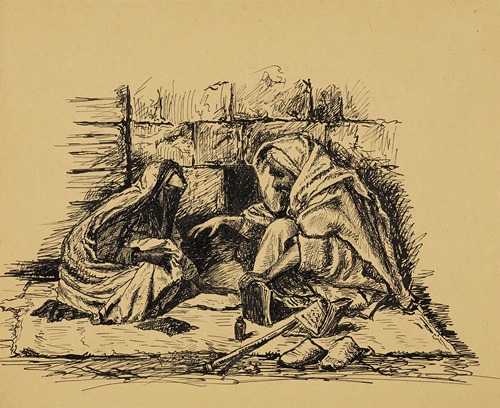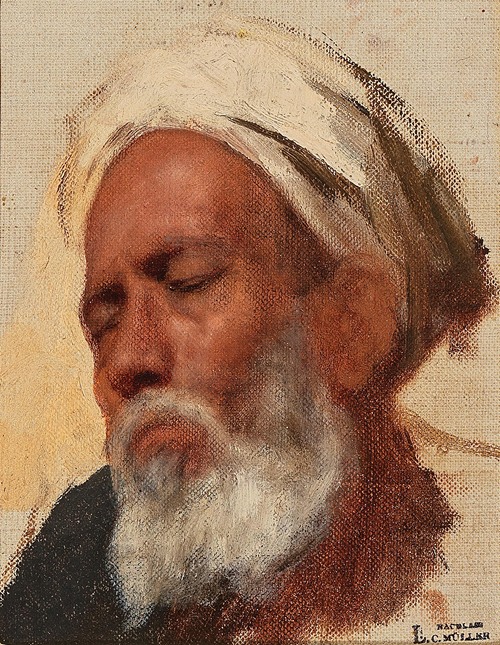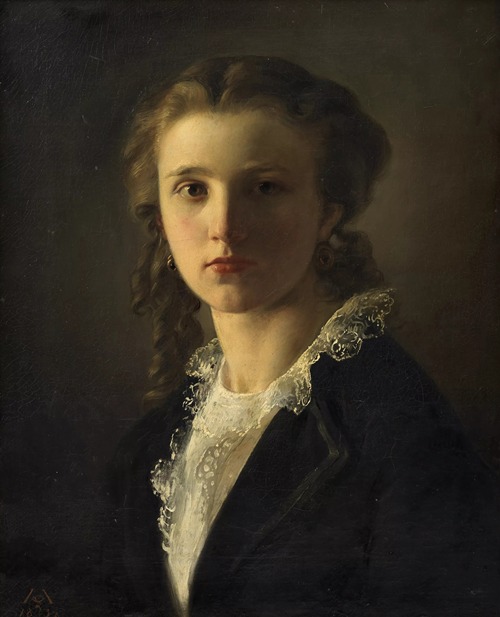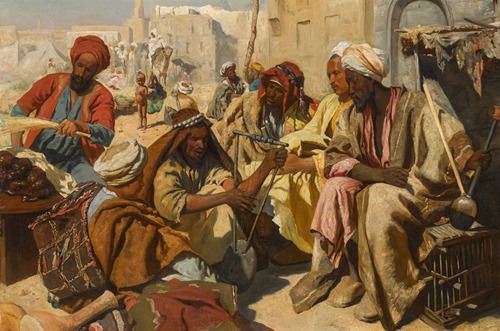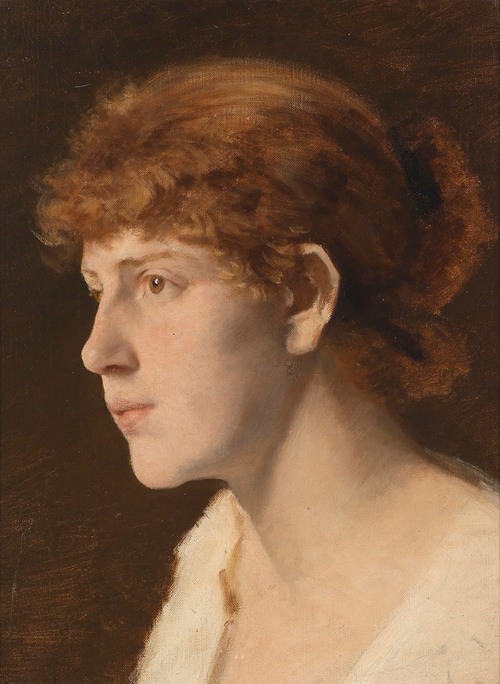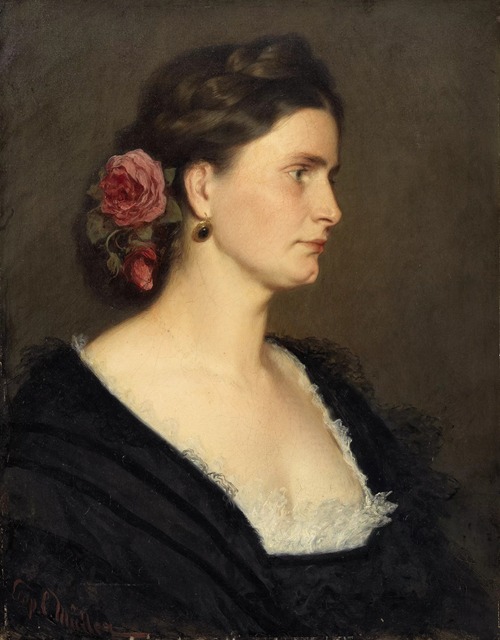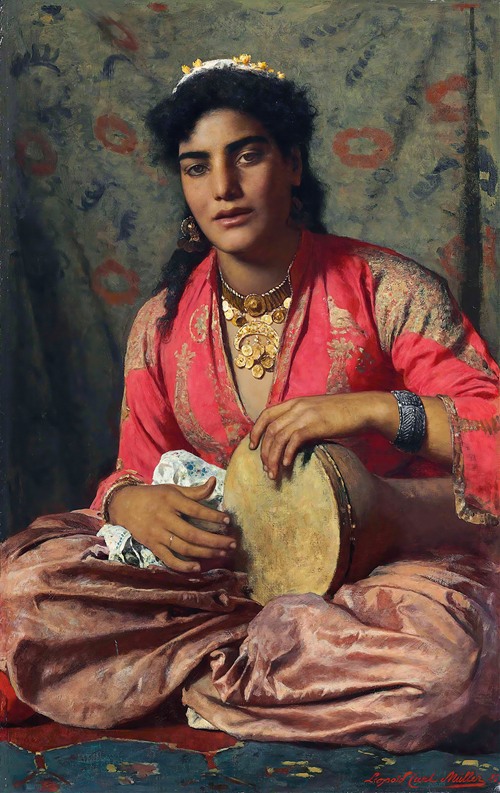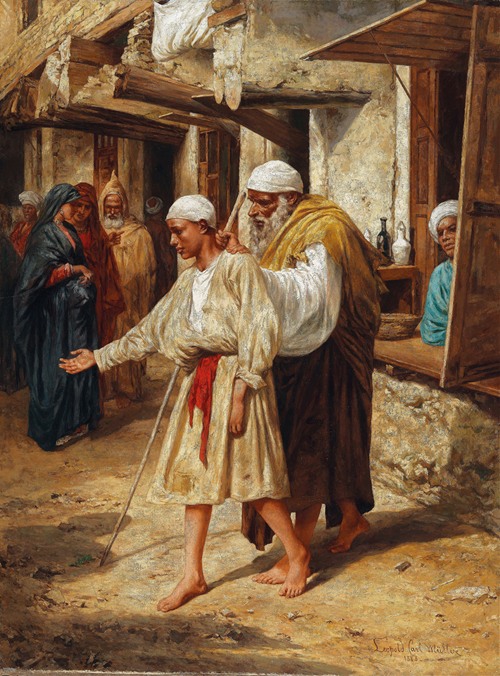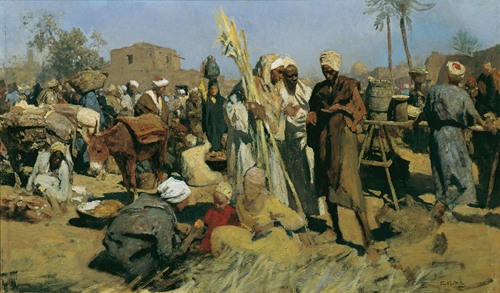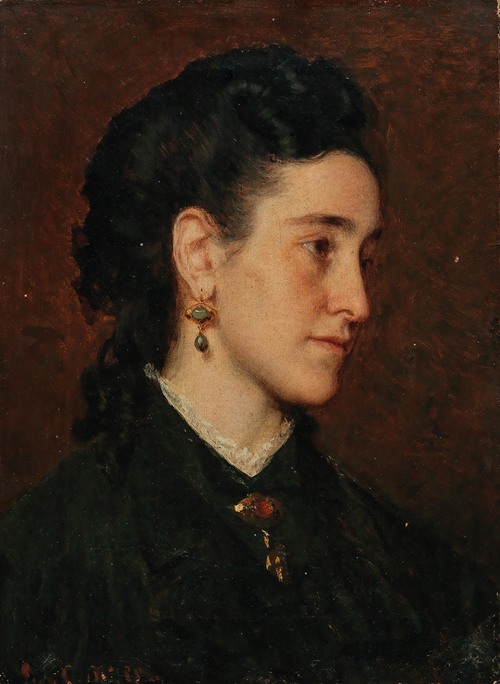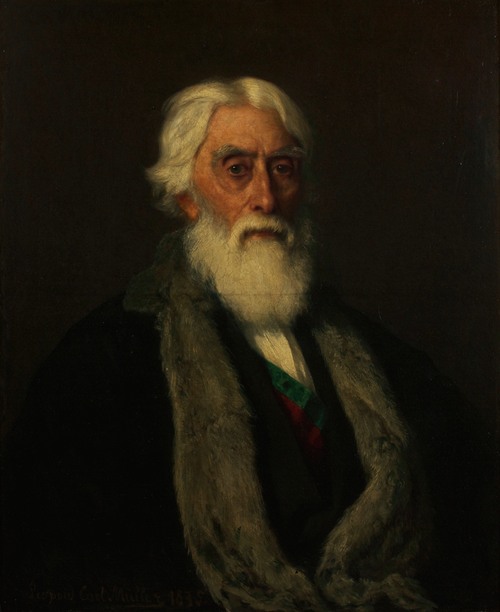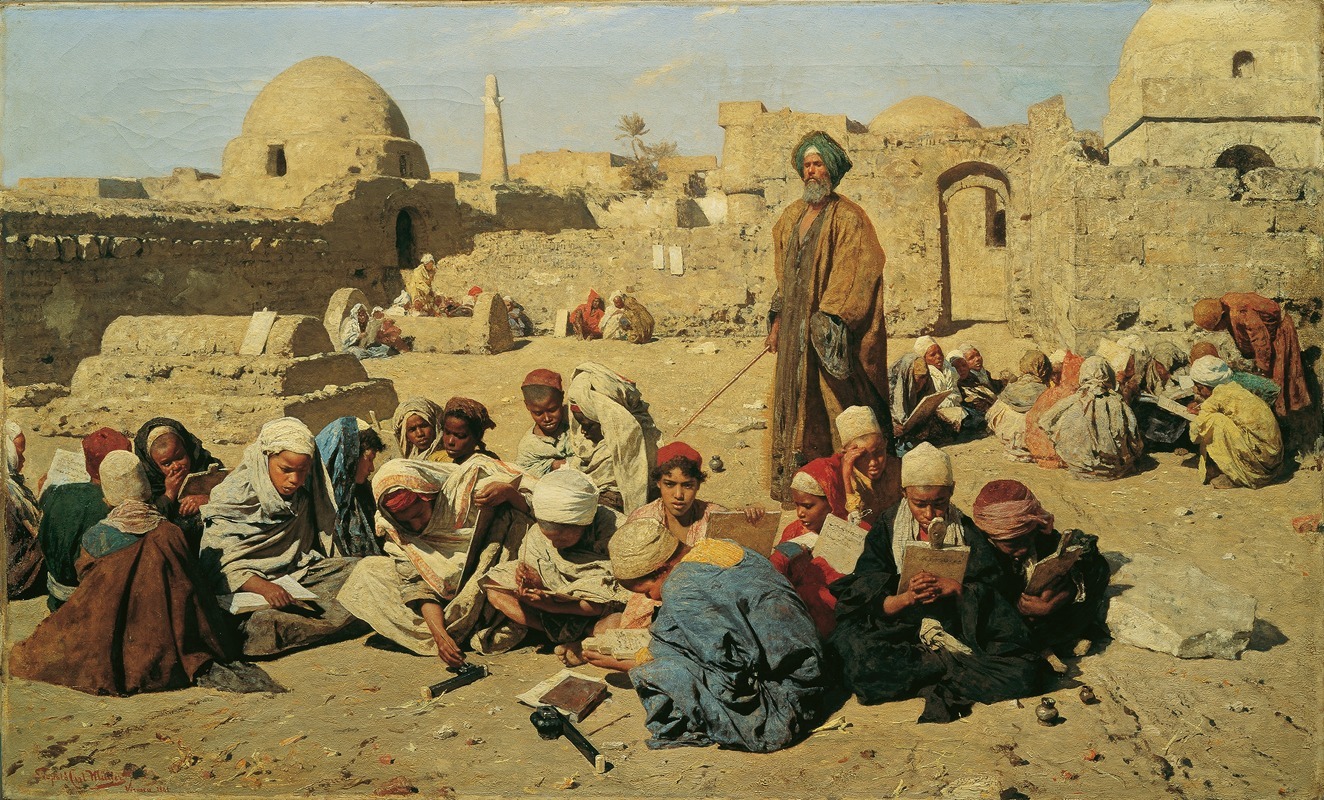
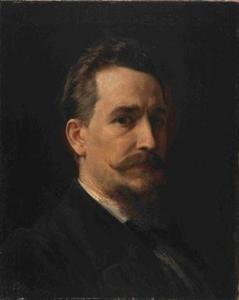
Leopold Carl Müller was an Austrian genre painter noted for his Orientalist works.
Born in Dresden to Austrian parents, he was a pupil of Karl von Blaas and of Christian Ruben at the Academy in Vienna. Obliged to support his family after his father's death, he worked eight years as an illustrator for the Vienna Figaro. Continuing his studies subsequently, he visited repeatedly Italy and Egypt, and made his name favorably known through a series of scenes from popular life in Italy and Hungary.
In the late 1860s, he visited Paris, where he was inspired by the work of Eugene Fromentin and subsequently turned his attention to the Orientalist genre. In 1877 Müller took a position as professor at the Vienna Academy and later as a rector during 1890-91. Among his pupils were several orientalists such as Ludwig Deutsch, Paul Joanowitch, Jean Discart and Charles Wilda.
His sisters were the painters Marie Müller (1847-1935) and Berta Müller (1848–1925), both well known in Austria for their portrait paintings. The third sister, Josefine, married the Austrian portrait painter Eduard Swoboda (1814-1902), he was the father of the painter Rudolf Swoboda and the portrait painter Josefine Swoboda.
He travelled to Egypt many times throughout his life, often staying there for six months at a time. In 1879, on his fifth visit, he travelled with his nephew and student, Rudolf Swoboda.
He died, aged 57, in Weidlingau, now part of Vienna and is buried at "The Zentralfriedhof" ("Central Cemetery") in Vienna.

